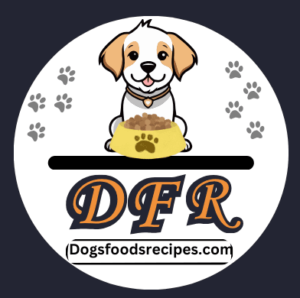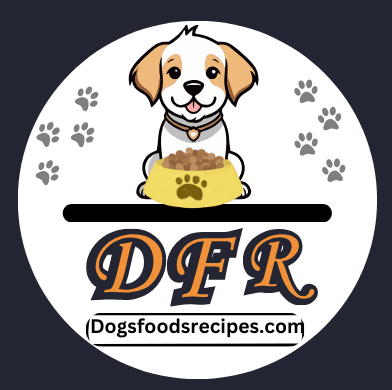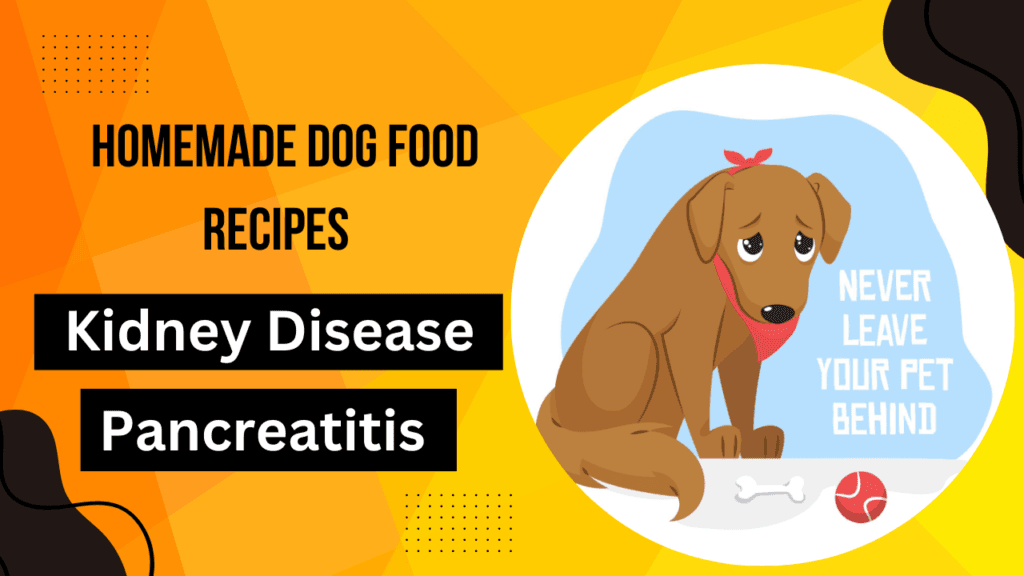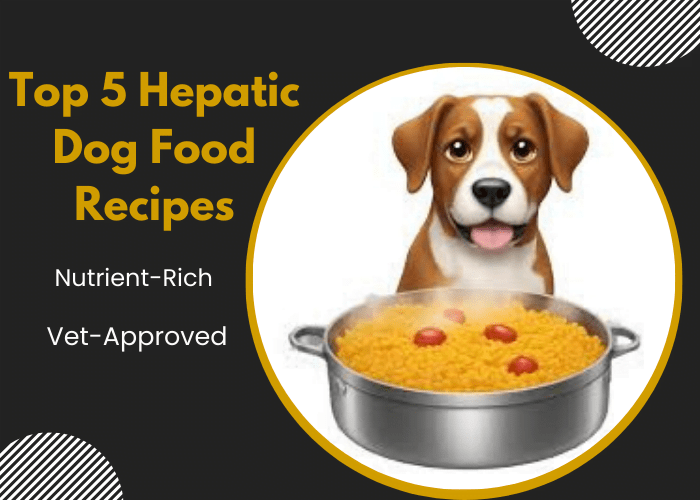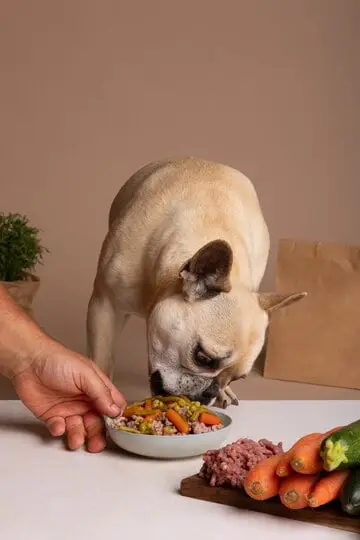Understanding Pancreatitis and Kidney Disease in Dogs
Pancreatitis and kidney disease are two major diseases that affect our dog’s health. Both of these diseases are dangerous and our dog can die from them. If we do not take care of it, we should take full care and take care of them. In this article, I will tell you in full detail about Pancreatic Disease. About how it happens, what its symptoms are, and how you can treat your dog. Similarly, I will tell you in full detail about kidney disease, its causes, symptoms, and treatment.
What is Canine Pancreatitis?
Canine pancreatitis refers to inflammation of the pancreas This organ is responsible for producing enzymes that aid in proper digestion and at the same time it produces hormones and also maintains blood sugar levels, When the pancreas becomes inflamed it will be painful for him and if not treated properly, it can become a major problem that can even be life-threatening for our dog, so we need to take care of our dog. A dog should be properly cared for when it has pancreatitis
Symptoms and Causes of Pancreatitis in Dogs
Symptoms of pancreatitis in dogs can vary depending on the severity of the inflammation. Some of the most common symptoms include:
- Vomiting
- Diarrhea
- Abdominal pain (dogs may exhibit a “prayer position” where they stretch their front legs forward and lower their head while keeping their rear end raised)
- Loss of appetite
- Lethargy
- Fever
These symptoms can sometimes be mistaken for other gastrointestinal issues, making it crucial to seek veterinary care for a proper diagnosis.
Several factors can contribute to the onset of pancreatitis in dogs, including:
- High-fat diet: A diet rich in fat, especially sudden consumption of fatty foods, is a leading cause of pancreatitis.
- Obesity: Overweight dogs are more prone to pancreatitis due to excess fat storage.
- Certain medications: Some medications, including corticosteroids, may trigger pancreatitis.
- Genetic predisposition: Certain breeds, such as Miniature Schnauzers and Yorkshire Terriers, are genetically more susceptible to developing pancreatitis.
- Underlying health conditions: Conditions like diabetes or hypothyroidism may increase the risk of pancreatitis in dogs.
What is Canine Kidney Disease?
Canine kidney disease occurs in dogs when their kidneys stop performing their proper function, such as not filtering the blood properly and passing the waste along with the blood to the body. Accumulates in the body that have a big impact on our dog’s health. How many diseases can we classify into two categories, The first is acute kidney disease and the second is chronic kidney disease.
Types of Kidney Disease in Dogs
- Acute Kidney Disease: The main causes of this kidney disease are exposure to toxins, certain medications, and infections. Acute kidney injury occurs in dogs of all ages, young or old. If our dog has this disease, we should check with the vet immediately
- Chronic Kidney Disease (CKD): Chronic kidney disease is a disease in which our beloved dog’s kidneys stop functioning because the lose their function over time. This type of kidney disease is more common in older dogs and can result from age-related wear and tear, hereditary factors, or long-term exposure to toxins.
Symptoms and Causes of Kidney Disease in Dogs
Recognizing the early signs of kidney disease is crucial for timely intervention. Some common symptoms of kidney disease in dogs include:
- Increased thirst and urination
- Weight loss
- Loss of appetite
- Vomiting
- Lethargy
- Bad breath (often caused by the buildup of toxins in the blood)
- Weakness and pale gums (due to anemia, a complication of kidney disease)
The causes of kidney disease in dogs can vary depending on the type:
- Toxin exposure: Ingestion of toxic substances like antifreeze, certain plants, or medications can lead to acute kidney failure.
- Infections: Bacterial infections, such as leptospirosis, can damage the kidneys.
- Age: Older dogs are more susceptible to chronic kidney disease due to the natural aging process.
- Breed predisposition: Breeds like Cavalier King Charles Spaniels and Bull Terriers are at higher risk for developing kidney disease.


The Importance of Diet in Managing These Conditions
Diet plays a crucial role in managing both and kidney disease in dogs. A proper diet can help A good diet plays an important role in correcting our dog’s diseases whether it is pancreatitis, kidney disease or any other disease recipe works in every disease if you give your dog a good diet it will help reduce the strain on the pancreas and kidneys, improve overall health, and alleviate symptoms associated with these conditions.
How Diet Impacts the Pancreas and Kidneys
- Low-Fat Diet for Pancreatitis: If a dog has pancreatic disease, he should be fed a low-fat diet that will reduce the workload of the pancreas. A Low-Fat Diet Can Help prevent flare-ups and aid in the healing process When your dog has pancreatic disease, you should avoid giving Tables scraps,to your dog, especially because it contain high in fat, and opt for veterinarian-recommended foods designed for dogs with pancreatitis.
- Recommended foods: Prescription low-fat dog food, lean meats (such as chicken or turkey), and fiber-rich vegetables like sweet potatoes and carrots.
- Foods to avoid: Fatty meats, dairy products, and high-fat commercial dog treats.
- Renal-Friendly Diet for Kidney Disease: If a dog has kidney problems, he needs a low-phosphorus, low-protein diet that helps minimize the burden to the kidneys. Waste products are in the bloodstream so you should give your dog a solution that is specifically formulated for kidney disease to help your dog’s program and recovery so that your dog can recover quickly.
- Recommended foods: Prescription renal diets, foods low in phosphorus (like egg whites and lean meats), and omega-3 fatty acid supplements to support kidney function.
- Foods to avoid: High-protein foods, foods rich in phosphorus (such as organ meats), and salty foods.
- Hydration: Keeping your dog well-hydrated is essential for both pancreatitis and kidney disease management. Water helps and supports digestion, reducing the strain on both the pancreas and the kidneys. Dogs with kidney disease may require additional fluids, which can be provided through wet food or subcutaneous fluid therapy under veterinary guidance.
- You should always keep your dog well-hydrated. This is especially important if your dog has pancreatic disease or kidney disease. water helps the kidneys flush out toxins and supports digestion Reducing the stain on both the and the kidneys If the dog has kidney disease, it requires some other fluids, we can only give them the advice of the doctor and he tells us. What fluids are they?
Tailoring the Diet to Your Dog’s Needs
It is important that you consult your vet before giving any diet to your dog as each dog needs a unique diet that is specific to its needs. Working with a veterinarian to develop a personalized nutrition plan will ensure that your dog’s diet supports both their pancreas and kidney health.
Monitoring and Adjusting the Diet Over Time
If your dog’s health is improving, you should also check his needs because his needs may change with progression, so you should have regular checkups or two or three. After the day, your doctor will tell you what adjustments can be made to his diet according to his needs, some of which include medication and additional treatment.
Nutritional Needs for Dogs with Pancreatitis and Kidney Disease
When it comes to pancreatitis and kidney disease in dogs, a proper diet plays a vital role in preparing the dog’s diet in such a way that it meets all its needs while also improving its health. Let’s get our dog to get well soon.
Key Nutrients for Dogs with Pancreatitis
When it comes to feeding a dog suffering from pancreatitis, we must make sure that they are getting a good diet. It can also become a life-threatening issue for our dog, so we need to take proper care of it and give it a diet that is low in fat and easy to digest, which helps our dog to be healthy. Recover yourself
Low-Fat Diets
A low-fat diet is the most important diet for dogs with pancreatitis. High-fat food put excessive strain on the pancreas and leads to further inflammation and discomfort. By reducing fat intake, you reduce the workload on the pancreas and lower the risk of triggering painful episodes.
- Why is fat harmful? When the pancreas is inflamed, it struggles to release the digestive enzymes required to break down fats. Feeding your dog a high-fat meal can overwhelm the pancreas, leading to severe symptoms such as vomiting, diarrhea, and abdominal pain.
- What to feed: Stick to lean meats like skinless chicken or turkey, and choose prescription dog foods specifically formulated for low-fat diets. These foods are designed to offer balanced nutrition without overburdening the pancreas.
- Foods to avoid: Avoid fatty cuts of meat, dairy products, and processed treats that contain high fat content.
Digestible Carbohydrates and Proteins
In addition to a low-fat diet, it’s essential to provide your dog with highly digestible carbohydrates and proteins. These nutrients should be easy for the dog’s digestive system to process, allowing the body to absorb essential vitamins and minerals without putting strain on the pancreas.
- Digestible proteins: Proteins are critical for maintaining muscle mass, but too much protein can be taxing on the digestive system. Opt for lean, easily digestible proteins like boiled chicken, white fish, or specialized veterinary diets that are low in fat but rich in high-quality protein.
- Digestible carbohydrates: Carbohydrates can provide a quick source of energy, but it’s important to choose those that are easy to digest. Foods like rice, sweet potatoes, and pumpkin are excellent options that are gentle on the stomach and provide essential nutrients.
- Avoid: Avoid ingredients like corn, wheat, and soy, which are common in many commercial dog foods but may be harder to digest for dogs with pancreatitis.


Key Nutrients for Dogs with Kidney Disease
A dog with kidney disease must maintain a proper balance of nutrients is crucial to slow the progression of kidney disease. The kidneys play a vital role in filtering waste from the blood. it’s important to reduce the workload on the dog’s kidneys by adjusting the diet.
Low-Phosphorus Diets
One of the most important structural components in a dog’s diet for dogs with kidney disease is low phosphorus levels. If you take it in the amount, then it does not filter well and it goes into the body along with the blood
- Why limit phosphorus? When kidney function declines, excess phosphorus builds up in the blood, leading to mineral imbalances and worsening the disease. By lowering phosphorus intake, you help reduce the strain on the kidneys and prevent further damage.
- What to feed: Opt for foods that are naturally low in phosphorus, such as egg whites, lean poultry, and rice. There are also prescription renal diets that are specifically formulated to restrict phosphorus levels.
- Foods to avoid: Avoid organ meats (such as liver), dairy products, and certain fish like sardines, which are naturally high in phosphorus.
High-Quality Proteins
Dogs with kidney disease also need protein to maintain their health and the most important focus is on high-quality protein that is easily digested and does not waste too much to work on the kidneys. The low quality protein have do workload on the kidneys because the quantity of this quality protein should be low and its quality should be high.
- Why high-quality protein? High-quality proteins are more digestible and produce fewer waste products, which is beneficial for dogs with compromised kidney function. These proteins provide the necessary nutrients without overburdening the kidneys.
- What to feed: Feed your dog lean cuts of meat like chicken or turkey, and consider prescription renal diets that contain carefully measured amounts of high-quality protein.
- Foods to avoid: Avoid cheap, low-quality protein sources found in many commercial dog foods, such as by-products and meat meals. These contain impurities and are harder for the kidneys to filter.
Sodium Restrictions
Another important dietary consideration for dogs with kidney disease is limiting sodium intake. Too much sodium can lead to high blood pressure, which exacerbates kidney problems and leads to fluid retention.
- Why limit sodium? Excess sodium causes fluid buildup in the body, which can be particularly harmful to dogs with kidney disease. It also contributes to increased blood pressure, which further damages the kidneys.
- What to feed: Choose foods that are low in sodium, including prescription kidney diets that carefully regulate sodium levels. Fresh, unseasoned meat and vegetables are ideal, as processed foods often contain hidden salt.
- Foods to avoid: Avoid commercial treats, processed dog foods, and table scraps that are high in salt, such as chips, cheese, and deli meats.
Homemade Dog Food: Benefits and Risks
When it comes to feeding dogs with serious health issues like pancreatitis or kidney disease, homemade dog food can offer many benefits, but it also comes with certain risks. Let’s break down the advantages and challenges of preparing homemade meals for your dog.
Advantages of Homemade Dog Food
Tailoring Nutrients to Your Dog’s Needs
One of the biggest advantages of homemade dog food is the ability to customize the ingredients to fit your dog’s specific health requirements. For dogs with pancreatitis, you can focus on low-fat, easy-to-digest foods. For dogs with kidney disease, you can prioritize low-phosphorus and high-quality proteins. This flexibility allows you to create meals that target your dog’s unique condition, unlike many commercial dog foods that might not offer the right balance for these health issues.
For example, you can choose lean meats like chicken or turkey, or select vegetables like green beans and pumpkin that aid in digestion or support kidney function. Customizing meals helps to control your dog’s condition more effectively, offering them a better quality of life.
Avoiding Harmful Additives
Many commercial dog foods contain preservatives, artificial flavors, and colors that can worsen health issues like pancreatitis and kidney disease. These additives might make the food last longer on the shelf, but they can be tough on your dog’s digestive system or organs.
By preparing food at home, you eliminate the risk of exposing your dog to these harmful chemicals. You know exactly what’s going into your dog’s bowl—just fresh, wholesome ingredients without any unnecessary fillers or potentially harmful substances. This way, you can ensure your dog is eating cleaner, healthier meals that support their recovery or disease management.
Risks and Challenges of Homemade Dog Food
Nutritional Imbalance Risks
One major challenge when making dog food at home is that it is not nutritionally balanced. People need a delicate balance of routine carbohydrates, fats, vitamins, and minerals that are stacked with their health. If certain nutrients are missing or too much of one is added, your dog might suffer from deficiencies or other health problems.
For instance, feeding a dog with kidney disease too much protein or phosphorus can worsen the condition, while giving a dog with pancreatitis too much fat can trigger an attack. Creating balanced meals requires research, careful planning, and often guidance from a vet or pet nutritionist to ensure all the necessary nutrients are included in the right proportions.
Lack of Proper Food Handling
Another risk with homemade dog food is the need for proper food handling and storage. Homemade meals, without the preservatives found in commercial dog food, can spoil more quickly, potentially causing foodborne illnesses if not stored properly. Bacteria like salmonella or E. coli can easily grow in improperly handled raw ingredients, putting your dog at risk.
It’s crucial to follow good food safety practices when preparing homemade dog food—this means washing your hands, cooking meats thoroughly, and storing leftovers in the refrigerator or freezer to prevent spoilage. Failing to do so can lead to health complications, especially for dogs already dealing with chronic conditions like pancreatitis or kidney disease.
Guidelines for Creating Homemade Dog Food for Pancreatitis and Kidney Disease
Preparing Dog Food Recipes at Home for Dogs with Pancreatitis and Kidney Diseases is a great way to ensure that our dogs are eating the right and nutritious meals. All we have to do when it comes to our pets is the condition required very specific dietary management in this I will tell you what guidelines you should follow before preparing your pet’s food.
Consulting with a Veterinarian or Pet Nutritionist
Always consult your vet or pet nutritionist before starting any home dog food as they are professionals and will give you a piece of good advice as to whether or not this diet is right for your dog. appropriate Ingredients Protein Size and Nutritional Supplement When making at home, make her fly and it has a balance, especially if the dog has a disease, then you have to make a perfectly balanced recipe, which I will tell you later in this article.
- Why consultation is important: Each dog is unique, and the severity of their condition will dictate different dietary requirements. A vet or nutritionist can tailor recommendations based on your dog’s bloodwork, breed, age, and overall health.
- Regular check-ups: Once on a homemade diet, regular veterinary check-ups will help monitor your dog’s progress and allow for adjustments to their diet as needed.
Basic Rules for Homemade Dog Food Preparation
When making homemade dog food for a dog with pancreatitis or kidney disease, it’s important to follow some basic rules. These ensure that the food you prepare is safe, nutritious, and beneficial for managing your dog’s condition.
Appropriate Ingredients
Choosing the right ingredients is key to managing both pancreatitis and kidney disease. The focus should be on low-fat, easily digestible ingredients for dogs with pancreatitis, and low-phosphorus, high-quality protein for dogs with kidney disease.
- For Pancreatitis: Use lean meats like chicken breast, turkey, or white fish. Low-fat carbohydrates such as sweet potatoes or rice are ideal, and you can add fiber-rich vegetables like green beans or pumpkin to aid digestion.
- For Kidney Disease: Opt for foods low in phosphorus, such as egg whites, rice, or green beans. Focus on high-quality proteins in moderate amounts, like lean turkey or specially formulated renal diets, to avoid overtaxing the kidneys. Avoid foods like organ meats and high-phosphorus fish (such as sardines).
Always ensure that the food is fresh, free of additives, and not heavily processed.
Cooking Methods
How you prepare your dog’s food is just as important as the ingredients themselves. Certain cooking methods can help make food easier to digest, especially for dogs with pancreatitis, while also preserving essential nutrients.
- Boiling or steaming: These methods are gentle and retain most of the nutrients in foods like lean meats, vegetables, and grains. They also avoid adding extra fat or oils that can trigger pancreatitis flare-ups.
- Baking: Baking is another option but should be done without adding any oils or fats.
- Avoid frying: Fried foods are not suitable for dogs with pancreatitis or kidney disease because they introduce unhealthy fats, which can aggravate symptoms and damage internal organs.
Always cook meat thoroughly to avoid the risk of bacterial infections, but avoid overcooking vegetables, as this can reduce their nutrient value.
Portion Control
You have to keep your dog’s diet light and give him a certain amount of food if he has pancreatic disease or how many diseases can make your dog fat. And if you give your dog less food, he won’t get all the nutrients, so you should give him a balanced and controlled diet.
- Why portion control matters: For dogs with pancreatitis, overeating can result in more fat entering the system, which the pancreas cannot handle. For kidney disease, large portions of protein or phosphorus-rich foods can accelerate the decline in kidney function.
- How to portion correctly: Your veterinarian or pet nutritionist can help determine the exact calorie and nutrient requirements for your dog based on their size, breed, and condition. Weighing your dog’s food portions ensures consistency and prevents overfeeding or underfeeding.
Transitioning from Commercial Food to Homemade Dog Food
Switching your dog from commercial food to homemade meals needs to be done gradually. Sudden changes in diet can lead to gastrointestinal upset or worsen existing health conditions.
- Start slow: Begin by mixing small amounts of the homemade food with your dog’s regular commercial diet. Gradually increase the proportion of homemade food while reducing the amount of commercial food over 7-10 days.
- Monitor your dog’s response: Pay attention to any changes in your dog’s behavior, digestion, or overall health. If you notice symptoms such as vomiting, diarrhea, or lethargy, it may indicate that the diet needs adjustment. In this case, consult your vet for further guidance.
- Consistency is key: Once fully transitioned, stick to the homemade diet plan consistently. Dogs with pancreatitis and kidney disease benefit from regularity in their meals, which helps to prevent flare-ups and maintain stable health.


Best Ingredients for Dogs with Pancreatitis
When feeding a dog with pancreatitis, choosing the right ingredients is essential to avoid triggering flare-ups and ensure they get the nutrition they need without putting too much strain on the pancreas. If you are giving your dog a recipe for pancreatic disease, choose ingredients that are good for pancreatitis and don’t overload your dog’s pancreas. The goal is to provide a low-fat, easily digestible diet that includes lean proteins, healthy carbs, and limited fats. Let’s look at the best ingredients for dogs with pancreatitis.
Proteins Safe for Pancreatitis
Lean Chicken
Lean chicken breast is a fantastic protein choice for dogs with pancreatitis. It’s low in fat, making it easier for the pancreas to process, and it’s highly digestible. Always cook the chicken without any oils or seasoning to keep it as healthy as possible. Boiling or baking the chicken is ideal.
Turkey
Turkey is another excellent low-fat protein option. Similar to chicken, turkey breast is lean and easy for dogs to digest, making it a safe choice for dogs with pancreatitis. Ground turkey can also be used, but be sure it’s labeled as lean and is cooked thoroughly.
Egg Whites
Egg whites are rich in protein but very low in fat, making them perfect for dogs with pancreatitis. They provide the protein your dog needs for muscle maintenance and overall health without the fat that could trigger a pancreatitis episode. Avoid egg yolks, as they contain higher fat levels.
Carbohydrates That Aid Digestion
Rice
White rice is a staple carbohydrate for dogs with digestive issues, including pancreatitis. It’s easy on the stomach, provides energy, and helps firm up stools if your dog is experiencing diarrhea. Rice is low in fat and easily digestible, making it a safe choice for dogs with pancreatic issues.
Sweet Potatoes
Sweet potatoes are another excellent carbohydrate source for dogs with pancreatitis. They are packed with fiber, vitamins, and minerals, and their natural sweetness makes them appealing to most dogs. Their high fiber content aids in digestion, while their low-fat profile keeps them safe for pancreatitis management.
Oatmeal
Oatmeal is a gentle grain that can be a great addition to your dog’s diet. It’s a source of soluble fiber, which helps regulate digestion, and it’s also low in fat. Oatmeal can be especially beneficial for older dogs or those with sensitive stomachs, as it’s easy to digest.
Healthy Fats in Moderation
Fish Oil
Fish oil is a good source of omega-3 fatty acids, which can help reduce inflammation in dogs with pancreatitis. However, it should be given in small amounts because even healthy fats can be hard for a dog with pancreatitis to process. Omega-3s also support skin and coat health, providing additional benefits beyond digestion.
Coconut Oil (in small amounts)
Coconut oil can be beneficial for some dogs due to its anti-inflammatory properties, but it should only be used in very small amounts for dogs with pancreatitis. While coconut oil is considered a healthy fat, too much fat can lead to a flare-up, so it’s important to consult with your vet about the right amount.
Vegetables and Fruits for Fiber and Nutrients
Pumpkin
Pumpkin is a great source of fiber, which can help with digestion and regulate bowel movements. It’s also low in fat, making it suitable for dogs with pancreatitis. Pumpkin can be served cooked or canned but make sure it’s pure pumpkin with no added sugars or spices.
Carrots
Carrots are another low-fat vegetable that can be safely included in a pancreatitis-friendly diet. They are rich in vitamins and fiber, which helps with digestion. Carrots can be served raw (cut into small pieces) or cooked, depending on what your dog prefers.
Apples (no seeds)
Apples are a healthy, fiber-rich fruit that dogs with pancreatitis can enjoy in moderation. Be sure to remove the seeds and core, as they can be harmful. Apples provide a sweet treat that’s low in fat and packed with vitamins like Vitamin C, which supports the immune system.
Best Ingredients for Dogs with Kidney Disease
If the disease is present in the dog, then about 40-50 percent of its health can be corrected by its food, but it is choosing the right ingredients and reducing the kidney stain, Below is a list of some of the best ingredients for dogs with kidney disease, focusing on low-phosphorus protein sources, phosphorus-binding foods, omega-3-rich ingredients, and low-sodium vegetables and fruits.
Low-Phosphorus Protein Sources
For dogs with kidney disease, it’s important to provide high-quality proteins that are low in phosphorus. This helps reduce the workload on the kidneys, allowing them to process nutrients without being overwhelmed. Here are some ideal protein options:
Egg Whites
Egg whites are a fantastic source of high-quality protein with very little phosphorus. They are easy for the kidneys to process and can help maintain muscle mass in dogs without contributing to kidney damage.
Cottage Cheese
Cottage cheese, especially the low-sodium variety, is another good protein option for dogs with kidney disease. It’s rich in protein but low in phosphorus, making it a kidney-friendly choice in moderation.
White Fish
White fish such as cod, tilapia, or haddock is lean and low in phosphorus, making it an excellent protein source for dogs with kidney issues. It’s also packed with omega-3 fatty acids, which offer additional anti-inflammatory benefits.
Phosphorus-Binding Foods
Phosphorus-binding foods can help prevent the absorption of too much phosphorus, which is harmful to dogs with kidney disease. These ingredients work to minimize the negative effects of phosphorus on the kidneys.
Green Beans
Green beans are low in phosphorus and high in fiber, making them a great addition to a kidney-friendly diet. They also offer essential vitamins and minerals without overwhelming the kidneys.
Cauliflower
Cauliflower is another low-phosphorus vegetable that can act as a phosphorus binder. It’s also high in antioxidants, which can help reduce inflammation and support overall kidney health.
Omega-3 Rich Ingredients
Omega-3 fatty acids are essential for dogs with kidney disease because they help reduce inflammation, support cardiovascular health, and slow down the progression of kidney damage. Here are two excellent sources:
Flaxseed Oil
Flaxseed oil is a plant-based source of omega-3s that can provide anti-inflammatory benefits for dogs with kidney disease. It can easily be added to homemade meals as a supplement to help support kidney function.
Fish Oil
Fish oil is another great source of omega-3s, particularly EPA and DHA, which are beneficial for reducing inflammation in the body. This can help manage symptoms of kidney disease and improve your dog’s overall well-being.
Low-Sodium Vegetables and Fruits
Since sodium can increase blood pressure and worsen kidney disease, it’s important to focus on low-sodium fruits and vegetables. These ingredients are safe for dogs with kidney issues and offer plenty of vitamins and antioxidants.
Blueberries
Blueberries are low in sodium and packed with antioxidants, making them a superfood for dogs with kidney disease. They are also low in calories, making them a healthy, kidney-friendly treat.
Cucumbers
Cucumbers are hydrating and low in sodium, providing a refreshing snack or addition to homemade meals. They are gentle on the kidneys and help with fluid balance, which is crucial for dogs with kidney disease.
Bell Peppers
Bell peppers are rich in vitamins A and C, low in sodium, and contain very little phosphorus, making them an excellent vegetable for dogs with kidney disease. They are a healthy, crunchy treat that can add variety to your dog’s diet.
Sample Homemade Dog Food Recipes
When creating homemade meals, it’s essential to use ingredients that are easy to digest and low in fat or phosphorus. Below are some tailored recipes that are both nutritious and suitable for managing these conditions.
If you’re making a homemade meal for dogs with pancreatitis or kidney disease, the one thing they both have in common is that the ingredients you’re going to use should be just low-fat for Pancreatic disease. There should be a low fast source, especially in the case of many diseases, and some tasty and nutrient-rich recipes.
Recipe 1: Low-Fat Chicken and Rice Meal (For Pancreatitis)
This simple meal is easy on the digestive system and helps manage pancreatitis by using low-fat ingredients.
Ingredients:
- 1 cup skinless, boneless chicken breast (boiled and shredded)
- 1/2 cup cooked white rice
- 1/4 cup steamed carrots (chopped)
- 1/4 cup steamed green beans (chopped)
Instructions:
- Boil the chicken breast until fully cooked, then shred it into small, manageable pieces.
- Cook the white rice and steam the carrots and green beans until tender.
- Combine the shredded chicken, rice, carrots, and green beans in a bowl.
- Let the meal cool before serving it to your dog.
This meal is high in lean protein, low in fat, and contains easily digestible carbohydrates, making it ideal for dogs with pancreatitis.
Recipe 2: Turkey and Sweet Potato Stew (For Pancreatitis)
This turkey and sweet potato stew is a hearty, low-fat meal that helps provide the necessary nutrients without putting stress on the pancreas.
Ingredients:
- 1 cup ground turkey (lean)
- 1/2 cup sweet potatoes (cooked and mashed)
- 1/4 cup steamed spinach (chopped)
- 1/4 cup cooked oats (plain)
Instructions:
- Brown the ground turkey in a pan, ensuring all fat is drained and removed after cooking.
- Boil or bake the sweet potatoes until soft, then mash them.
- Steam the spinach and chop it into small pieces.
- Cook plain oats (no added salt or sugar).
- Mix all the ingredients together and allow them to cool before serving.
This recipe is nutrient-dense and low in fat, making it safe for dogs with pancreatitis while also being filling and tasty.
Recipe 3: Egg White and Cottage Cheese Delight (For Kidney Disease)
This meal is designed for dogs with kidney disease, focusing on low-phosphorus, high-quality protein sources.
Ingredients:
- 3 egg whites (cooked and chopped)
- 1/4 cup low-fat cottage cheese
- 1/4 cup boiled zucchini (chopped)
- 1/4 cup steamed cauliflower (chopped)
Instructions:
- Separate the egg whites and cook them in a non-stick pan or boil them until fully cooked, then chop them into small pieces.
- Boil the zucchini and steam the cauliflower until they are soft, then chop them finely.
- In a bowl, mix the egg whites, cottage cheese, zucchini, and cauliflower.
- Let the meal cool before offering it to your dog.
This meal offers a low-phosphorus, high-protein option that is gentle on the kidneys and still provides plenty of flavor and nutrients.
Recipe 4: Fish and Veggie Mix (For Kidney Disease)
This fish and vegetable recipe is ideal for dogs with kidney disease, offering lean protein and kidney-friendly vegetables.
Ingredients:
- 1 cup white fish (like cod or tilapia, cooked and flaked)
- 1/2 cup steamed broccoli (chopped)
- 1/4 cup cooked quinoa
- 1/4 cup steamed carrots (chopped)
Instructions:
- Cook the white fish thoroughly (boiling or steaming is ideal) and flake it into small pieces.
- Steam the broccoli and carrots until they are tender, then chop them into small pieces.
- Cook the quinoa according to the package instructions (plain, with no added salt).
- Mix the fish, broccoli, quinoa, and carrots.
- Allow the mixture to cool before feeding it to your dog.
This meal provides a good balance of lean protein and kidney-friendly vegetables, making it perfect for dogs with kidney disease.
Tips for Making Homemade Dog Food More Palatable
Adding Flavor Without Salt or Harmful Additives
When making dog food at home, flavor is key. Dogs love a tasty meal, just like us! Instead of salt or artificial additives, try adding safe, dog-friendly ingredients like a splash of low-sodium bone broth, a sprinkle of turmeric, or finely chopped herbs like parsley. These natural options boost flavor and provide health benefits, making mealtime more enjoyable for your furry friend.
Serving at Optimal Temperature
No one likes their food should be too hot or too cold, be it human or animal, that’s why you should serve your dog food at home at room temperature so that he can eat it well and comfortably. So it will also be easier for the food system to digest
Keeping Meals Fresh and Avoiding Spoilage
Freshness matters. Store your homemade dog food in airtight containers in the fridge, and make sure to use it within 3-4 days to prevent spoilage. If you make larger batches, freeze individual portions for convenience. Always give the food a quick check before serving—if it smells off or has changed texture, it’s better to toss it out. This will keep your dog safe and happy during mealtime.


Essential Supplements for Dogs with Pancreatitis and Kidney Disease
Pancreatitis-Friendly Supplements
For dogs with pancreatitis, it’s crucial to support digestion and reduce inflammation. Here are some beneficial supplements:
Digestive Enzymes
Pancreatitis also affects the ability of the pancreas to produce enzymes necessary for digesting food, which can lead to discomfort and nutrient deficiencies. Digestive enzyme supplements can help break down fats, proteins, and carbohydrates, making it easier for your dog to absorb essential nutrients. Look for enzyme products containing lipase, protease, and amylase—these enzymes aid in digesting fats, proteins, and carbohydrates respectively. Always consult your vet for the correct dosage, as too much can sometimes cause gastrointestinal upset.
Kidney Disease-Friendly Supplements
Kidney disease in dogs often requires special attention to nutrition to protect the kidneys and support their overall well-being. Here are some effective supplements to consider:
Omega-3 Fatty Acids
Omega-3 fatty acids can be a good food for your dog if your dog has kidney disease or pancreatitis. This fatty acid is found in fish oil that helps reduce inflammation in the kidneys and improve blood flow It also helps to repair damage kidney. When choosing a supplement, look for high-quality fish oil specifically for pets.
Calcium and Vitamin D
Kidney disease can lead to imbalances in calcium and phosphorus levels in dogs, causing complications. A calcium supplement can help bind excess phosphorus, reducing the strain on the kidneys. Additionally, Vitamin D is essential for maintaining healthy bones and supporting calcium balance. However, these supplements should only be given under veterinary supervision, as too much calcium or Vitamin D can lead to serious health issues. Make sure to monitor phosphorus levels regularly to adjust the supplementation accordingly.
Monitoring Your Dog’s Health with Homemade Diets
Recognizing Signs of Improvement
When transitioning your dog to a homemade diet, it’s important to monitor their health to ensure they’re thriving. Here are some positive signs to look for:
Better Digestion
A key benefit of homemade dog food is that it improves our dog’s digestion because when we add fresh ingredients to it, it gets digested.. Look for regular, well-formed stools, and less gas or bloating. If your dog’s stools are firmer and easier to pick up, and if there are fewer digestive issues like vomiting or diarrhea, it’s a sign that their diet is working well for them. Healthy digestion also means your dog is absorbing nutrients effectively.
More Energy
Another sign that the homemade diet is beneficial is an increase in your dog’s energy levels. If you notice your dog is more playful, enjoys longer walks, or seems generally happier, it could be an indication that their body is receiving the right balance of nutrients. A homemade diet tailored to your dog’s needs can provide better quality energy, improving their overall mood and activity levels.
Knowing When to Adjust the Diet
Sometimes, changes in your dog’s health may require adjustments to their homemade diet to ensure they are getting the right nutrients and staying healthy.
Changes in Weight
You should always keep an eye on your dog’s weight. If your dog has unexpected weight gain or loss, it is a sign that your diet needs adjustment. So you need more calories and additional protein and fats on the other hand. if they are gaining weight, you might need to reduce portion sizes or adjust the types of fats included in the diet. Regularly weighing your dog at home or during vet visits can help track these changes accurately.
New Symptoms or Health Issues
If you’re seeing new symptoms in your dog like skin problems, excess appetite, and digestive issues, it’s an indication that there’s something in their diet that’s affecting their health. It can also be caused by allergies, nutrient deficiencies, or an imbalances diet.


Common Mistakes to Avoid When Making Homemade Dog Food
Using Incorrect Ingredients
One of the most common mistakes people make when making dog food at home is to use ingredients that are perfectly fine for dogs and perfectly fine for humans can be harmful or even toxic to dogs. Ingredients like onions, garlic, chocolate, grapes, and raisins Should Be careful how any ingredients you put in your dog’s food are healthy before adding something new to your dog’s meals. Stick to dog-safe proteins, vegetables, and grains to ensure your furry friend stays healthy.
Overlooking Essential Nutrients
Another big mistake that people make is not getting enough of the necessary nutrients in dog food. It requires a well-balanced diet that includes proteins, carbohydrates, healthy fats, vitamins, and minerals. This can lead to deficiencies in your dog and lead to many health problems. For example, if your recipe is low in calcium, your dog may have joint problems. You should always adjust any recipe. Before giving it to your dog, be sure to consult a vet nutritionist who will give you a homemade food recipe that contains the necessary nutrients to support your dog’s overall health.
Not Measuring Portions Correctly
Portion control is key when making homemade dog food. Feeding too much or too little can lead to weight issues—either obesity or malnutrition. The appropriate portion size depends on your dog’s age, breed, weight, and activity level. Overfeeding can put unnecessary strain on their joints and lead to other health issues while underfeeding can leave them lacking energy and vital nutrients. Measure each portion carefully, and adjust according to your dog’s weight and health changes. Regularly monitoring their body condition and consulting your vet for guidance can help you keep your dog at a healthy weight.
Storing Homemade Dog Food Safely
Proper Refrigeration Techniques
After preparing homemade dog food, proper refrigeration is essential to keep it fresh and safe. Store the food in airtight containers to prevent bacterial contamination and maintain flavor. Glass or BPA-free plastic containers work well. Place the food in the refrigerator as soon as it cools to room temperature, and make sure to keep the fridge temperature at or below 40°F (4°C). Homemade dog food should be consumed within 3-4 days when refrigerated to ensure it stays fresh and nutritious for your dog.
Freezing Meals for Longer Preservation
For longer storage, freezing is an excellent option. Portion the homemade dog food into meal-sized servings before freezing, making it easier to defrost only what you need. Use freezer-safe containers or resealable bags to store the portions, and be sure to label them with the date. Frozen dog food can last for up to 3 months without significant loss of quality, though it’s best used within 1-2 months for optimal freshness. When ready to serve, thaw the food in the refrigerator overnight to keep it safe from bacterial growth.
How Long Homemade Dog Food Stays Fresh
The freshness of homemade dog food depends on how you store it. In the refrigerator, its freshness can 3-4 days. If you freeze it, then you can store it for three months. But after a long time, its flavor will change. After one month, its flavor will not be the same as before, so you should not cook new food per week. Then you should make a new one for the next week so you can make sure your dog is eating a fresh meal and living a happy and healthy life GA and safe from anise.
The Role of Hydration in Pancreatitis and Kidney Disease Management
Ensuring Adequate Water Intake
Hydration plays a critical role in managing both pancreatitis and kidney disease in dogs. These conditions often increase the risk of dehydration, which can make symptoms worse and delay recovery. Ensuring that your dog drinks enough water is vital for supporting their body’s functions and reducing stress on their kidneys and pancreas. Fresh, clean water should always be available, and you can encourage more water intake by placing multiple water bowls around your home or using a pet water fountain to make drinking more appealing.
Adding Water to Meals
You can also give your dog water directly, which will increase his hydration while he is eating. For everything that also helps with digestion, keep your dog hydrated so he doesn’t get dehydrated. You should give your dog water about three to four times a day.
Signs of Dehydration to Watch For
Remember, we must always keep dogs with pancreatitis hydrated, not allowing them to become dehydrated. Common symptoms of dehydration include dry gums, a sticky or dry nose, sunken eyes, and lethargy. You can also check if your dog is dehydrated by picking up the skin between his shoulders and checking the urine of a sick dog to check for dehydration. If you are experiencing more or less of these symptoms in your dog, you can consult your vet to keep him hydrated.
Conclusion:
Diet at home is a rewarding way to care for your dog’s health and well-being if you use quality ingredients and ensure a balanced diet that meets all of your dog’s needs. Careful monitoring should be done, and proper hydration and essential supplements should be given to support his health, especially if your dog has pancreatitis or kidney disease Your dedication to their diet and care makes all the difference—resulting in a healthier, happier dog who enjoys life to the fullest.
.
FAQs
How do I know if homemade dog food is right for my dog?
The best solution is to talk to your vet about whether it’s good or not, but let me tell you, if your recipe is meeting all your dog’s needs, it’s best.
Can I feed my dog both commercial and homemade food?
Yes, you can absolutely mix commercial home it has many benefits as there are some ingredients in commercial food that we add in homemade food, and still, you should consult your vet once.
Are supplements necessary for dogs with these conditions?
Supplements are necessary for tech, if he has any diseases like lip swelling and kidney disease, then you can consult your vet and add supplements.
What if my dog refuses to eat the homemade food?
Try warming the food or adding low-sodium broth for flavor. Introduce it gradually by mixing it with their favorite food. If refusal continues, consult your vet.
How often should I change the homemade recipes for variety?
You should keep changing your dog’s recipe, which means changing his recipe every few weeks. The digest system will also remain correct
